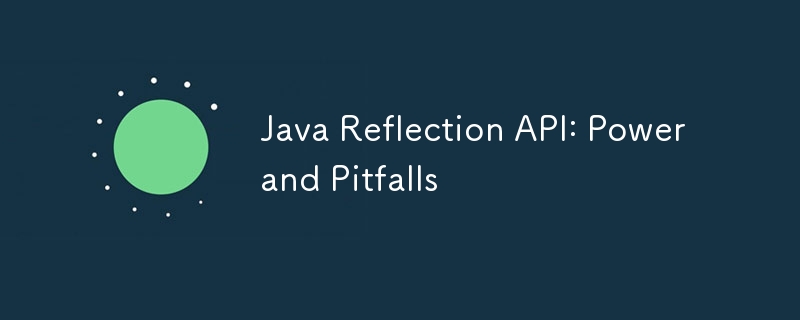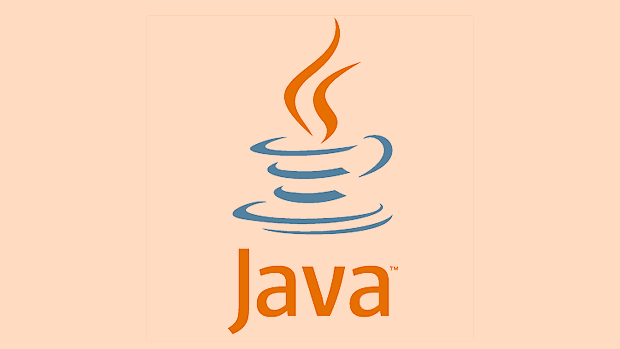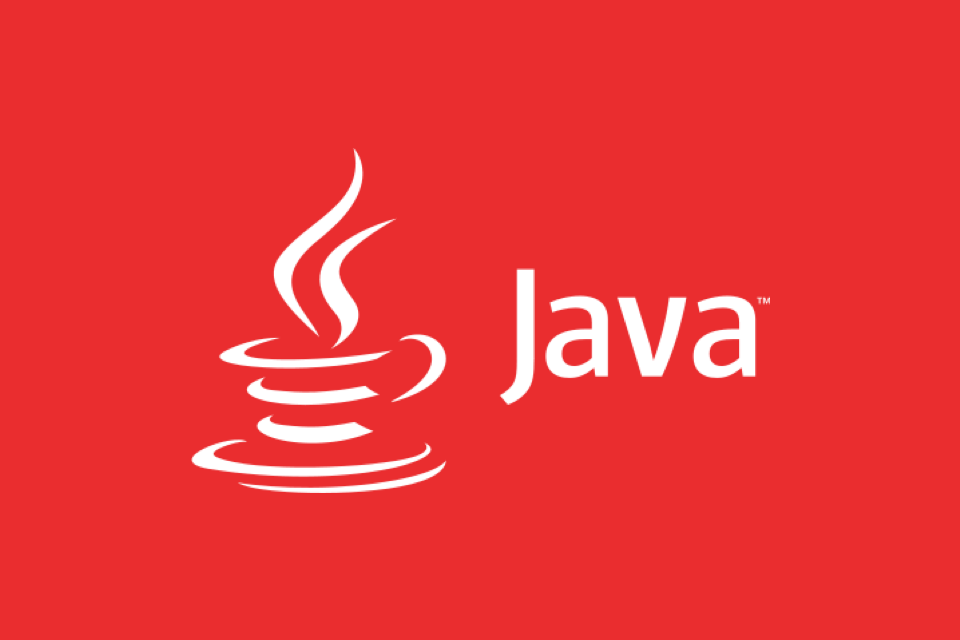The core answer to reflection is: it is a double-edged sword that can realize dynamic operational structures at runtime, but it needs to be used with caution to avoid performance, safety and maintenance issues. 1. The power of reflection lies in dynamically creating objects, calling methods, accessing private members and extracting generic type information, which is widely used in frameworks such as Spring and Hibernate. 2. The main risks include high performance overhead, disruption of packaging, runtime errors caused by bypassing compile-time checks, and compatibility issues with new features such as Java module systems. 3. Suitable for use in framework development, plug-in systems, unit testing and generic type recovery, and should be avoided in ordinary business logic, performance-sensitive scenarios, or when polymorphic substitution is available. 4. Best practices include prioritizing the use of interface design, cache reflective objects, proper handling of exceptions, and considering better alternatives such as MethodHandle or bytecode enhancement. The ultimate principle is to use it carefully while understanding the cost to ensure a balance of flexibility and stability.

The Java Reflection API is a powerful mechanism provided by Java, allowing programs to check, access and modify structure information such as classes, methods, fields at runtime, and even call methods or create objects at runtime. This "introduction" capability allows developers to write highly flexible and universal code, but also comes with performance, security, and maintainability risks.

1. The power of reflection
The core value of reflection is that it breaks the type limitations at compile time, allowing code to dynamically handle unknown types at runtime. This is widely used in many frameworks and libraries.
1. Dynamically create objects and call methods
You can instantiate an object and call its methods without knowing the class name:

Class<?> clazz = Class.forName("com.example.MyClass");
Object instance = clazz.getDeclaredConstructor().newInstance();
Method method = clazz.getMethod("doSomething");
method.invoke(instance);This is very critical in frameworks such as Spring and Hibernate for scenarios such as dependency injection, object-relational mapping (ORM).
2. Access private members
Reflection can bypass access control and access private fields and methods:

Field privateField = clazz.getDeclaredField("secret");
privateField.setAccessible(true); // Disable access check privateField.set(instance, "hacked");This is useful for unit testing (such as testing private methods) or for some special tools (such as serialized libraries).
3. Generic type information extraction
Through ParameterizedType , reflection can also obtain the actual type parameters of a generic, which is crucial in JSON deserialization (such as Gson):
Type type = new TypeToken<List<String>>(){}.getType();
List<String> list = gson.fromJson(json, type);2. Common pitfalls and risks of reflection
Despite its powerful capabilities, the abuse of reflection can bring about a range of problems.
1. Large performance overhead
Reflection operations are much slower than direct calls, and the reasons include:
- Method calls need to go through JVM security check
- Can't be effectively optimized by the JIT compiler
- Each call
invoke()involves parameter wrapping and type checking
Recommendation : Avoid using reflection in high-frequency paths. If necessary, Method and Field objects can be cached to reduce duplicate searches.
2. Destroy packaging and security
setAccessible(true) can access private members, which violates the principle of object-oriented design and may result in:
- Unexpected modification of internal status
- Bypassing business logic verification
- Throws
SecurityExceptionwhen Security Manager is turned on
Recommendation : Use only when necessary (such as testing, serialization), and clearly indicate risks.
3. Compilation period checking fails
Errors in the reflected code (such as misspelling of method names and mismatched parameter types) will only be exposed at runtime:
method.invoke(obj, "wrongType"); // throws IllegalArgumentException when running
This increases debugging difficulty and reduces code robustness.
Recommended : Strengthen unit testing when using reflection, or combine annotation compile-time processing (such as APT) to reduce errors.
4. Compatibility issues with modern Java features
- Module System (Java 9) : By default, modules are isolated and reflective access to non-exported packages will fail.
- Records : When reflecting to obtain constructors or fields, you need to pay attention to their immutability.
- Sealed Classes : Although reflection can obtain allowed subclasses, its design intention should not be bypassed.
3. When to use reflection? When to avoid it?
Suitable for reflection scenarios :
- Framework development (such as ORM, serialization, dependency injection)
- Plug-in system or dynamic loading class
- Accessing private members in unit tests
- Type recovery after generic type erasing
Reflection should be avoided :
- Alternative interface or polymorphism in ordinary business logic
- Performance-sensitive code paths
- Problems that can be solved through interface, policy mode or factory mode
4. Best Practice Suggestions
- Priority is given to design rather than reflection : if it can be solved by interfaces, generics, and lambda, do not use reflection.
- Cache reflective objects : Reused
MethodandConstructorshould be cached to avoid repeated searches. - Do a good job of exception handling :
NoSuchMethodException,IllegalAccessException, andInvocationTargetExceptionmust be handled properly. - Consider alternatives : such as
java.lang.invoke.MethodHandle(better performance), dynamic proxy, bytecode enhancement (ASM, ByteBuddy), etc.
Basically that's it. Reflection is like a double-edged sword: if used well, you can write a flexible and powerful framework; if used poorly, it will bring about performance bottlenecks and maintenance nightmare. The key is to understand its price and use it with caution in the right scenario.
The above is the detailed content of Java Reflection API: Power and Pitfalls. For more information, please follow other related articles on the PHP Chinese website!

Hot AI Tools

Undress AI Tool
Undress images for free

Undresser.AI Undress
AI-powered app for creating realistic nude photos

AI Clothes Remover
Online AI tool for removing clothes from photos.

Clothoff.io
AI clothes remover

Video Face Swap
Swap faces in any video effortlessly with our completely free AI face swap tool!

Hot Article

Hot Tools

Notepad++7.3.1
Easy-to-use and free code editor

SublimeText3 Chinese version
Chinese version, very easy to use

Zend Studio 13.0.1
Powerful PHP integrated development environment

Dreamweaver CS6
Visual web development tools

SublimeText3 Mac version
God-level code editing software (SublimeText3)
 Differences Between Callable and Runnable in Java
Jul 04, 2025 am 02:50 AM
Differences Between Callable and Runnable in Java
Jul 04, 2025 am 02:50 AM
There are three main differences between Callable and Runnable in Java. First, the callable method can return the result, suitable for tasks that need to return values, such as Callable; while the run() method of Runnable has no return value, suitable for tasks that do not need to return, such as logging. Second, Callable allows to throw checked exceptions to facilitate error transmission; while Runnable must handle exceptions internally. Third, Runnable can be directly passed to Thread or ExecutorService, while Callable can only be submitted to ExecutorService and returns the Future object to
 Asynchronous Programming Techniques in Modern Java
Jul 07, 2025 am 02:24 AM
Asynchronous Programming Techniques in Modern Java
Jul 07, 2025 am 02:24 AM
Java supports asynchronous programming including the use of CompletableFuture, responsive streams (such as ProjectReactor), and virtual threads in Java19. 1.CompletableFuture improves code readability and maintenance through chain calls, and supports task orchestration and exception handling; 2. ProjectReactor provides Mono and Flux types to implement responsive programming, with backpressure mechanism and rich operators; 3. Virtual threads reduce concurrency costs, are suitable for I/O-intensive tasks, and are lighter and easier to expand than traditional platform threads. Each method has applicable scenarios, and appropriate tools should be selected according to your needs and mixed models should be avoided to maintain simplicity
 Best Practices for Using Enums in Java
Jul 07, 2025 am 02:35 AM
Best Practices for Using Enums in Java
Jul 07, 2025 am 02:35 AM
In Java, enums are suitable for representing fixed constant sets. Best practices include: 1. Use enum to represent fixed state or options to improve type safety and readability; 2. Add properties and methods to enums to enhance flexibility, such as defining fields, constructors, helper methods, etc.; 3. Use EnumMap and EnumSet to improve performance and type safety because they are more efficient based on arrays; 4. Avoid abuse of enums, such as dynamic values, frequent changes or complex logic scenarios, which should be replaced by other methods. Correct use of enum can improve code quality and reduce errors, but you need to pay attention to its applicable boundaries.
 Understanding Java NIO and Its Advantages
Jul 08, 2025 am 02:55 AM
Understanding Java NIO and Its Advantages
Jul 08, 2025 am 02:55 AM
JavaNIO is a new IOAPI introduced by Java 1.4. 1) is aimed at buffers and channels, 2) contains Buffer, Channel and Selector core components, 3) supports non-blocking mode, and 4) handles concurrent connections more efficiently than traditional IO. Its advantages are reflected in: 1) Non-blocking IO reduces thread overhead, 2) Buffer improves data transmission efficiency, 3) Selector realizes multiplexing, and 4) Memory mapping speeds up file reading and writing. Note when using: 1) The flip/clear operation of the Buffer is easy to be confused, 2) Incomplete data needs to be processed manually without blocking, 3) Selector registration must be canceled in time, 4) NIO is not suitable for all scenarios.
 How Java ClassLoaders Work Internally
Jul 06, 2025 am 02:53 AM
How Java ClassLoaders Work Internally
Jul 06, 2025 am 02:53 AM
Java's class loading mechanism is implemented through ClassLoader, and its core workflow is divided into three stages: loading, linking and initialization. During the loading phase, ClassLoader dynamically reads the bytecode of the class and creates Class objects; links include verifying the correctness of the class, allocating memory to static variables, and parsing symbol references; initialization performs static code blocks and static variable assignments. Class loading adopts the parent delegation model, and prioritizes the parent class loader to find classes, and try Bootstrap, Extension, and ApplicationClassLoader in turn to ensure that the core class library is safe and avoids duplicate loading. Developers can customize ClassLoader, such as URLClassL
 Exploring Different Synchronization Mechanisms in Java
Jul 04, 2025 am 02:53 AM
Exploring Different Synchronization Mechanisms in Java
Jul 04, 2025 am 02:53 AM
Javaprovidesmultiplesynchronizationtoolsforthreadsafety.1.synchronizedblocksensuremutualexclusionbylockingmethodsorspecificcodesections.2.ReentrantLockoffersadvancedcontrol,includingtryLockandfairnesspolicies.3.Conditionvariablesallowthreadstowaitfor
 Handling Common Java Exceptions Effectively
Jul 05, 2025 am 02:35 AM
Handling Common Java Exceptions Effectively
Jul 05, 2025 am 02:35 AM
The key to Java exception handling is to distinguish between checked and unchecked exceptions and use try-catch, finally and logging reasonably. 1. Checked exceptions such as IOException need to be forced to handle, which is suitable for expected external problems; 2. Unchecked exceptions such as NullPointerException are usually caused by program logic errors and are runtime errors; 3. When catching exceptions, they should be specific and clear to avoid general capture of Exception; 4. It is recommended to use try-with-resources to automatically close resources to reduce manual cleaning of code; 5. In exception handling, detailed information should be recorded in combination with log frameworks to facilitate later
 How does a HashMap work internally in Java?
Jul 15, 2025 am 03:10 AM
How does a HashMap work internally in Java?
Jul 15, 2025 am 03:10 AM
HashMap implements key-value pair storage through hash tables in Java, and its core lies in quickly positioning data locations. 1. First use the hashCode() method of the key to generate a hash value and convert it into an array index through bit operations; 2. Different objects may generate the same hash value, resulting in conflicts. At this time, the node is mounted in the form of a linked list. After JDK8, the linked list is too long (default length 8) and it will be converted to a red and black tree to improve efficiency; 3. When using a custom class as a key, the equals() and hashCode() methods must be rewritten; 4. HashMap dynamically expands capacity. When the number of elements exceeds the capacity and multiplies by the load factor (default 0.75), expand and rehash; 5. HashMap is not thread-safe, and Concu should be used in multithreaded






